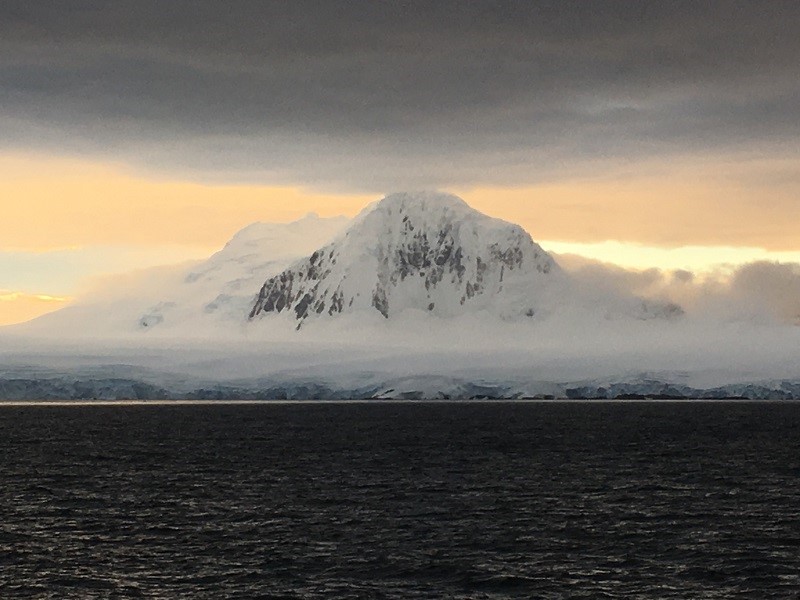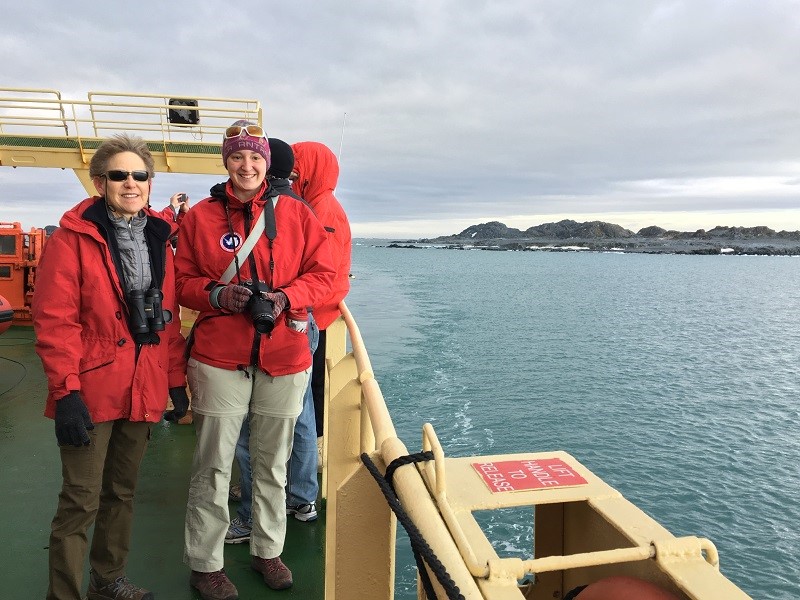
Over the last 24 hours onboard the LMG, the scenery surrounding the ship has changed as we approached the Antarctic Peninsula. Open ocean as far as the eye can see has been replaced by snowy islands and towering glacier-covered mountains on both sides of the ship. And now, 4 days after departing Chile, we have finally reached Palmer Station!
Michelle and I are both newcomers to Palmer Station while others in our group are veterans. This will be Maggie’s 27th trip to Palmer Station! But, all of us, newbies and veterans alike, are excitedly lined up on the ship’s deck, wearing our red parkas, as we approach the station. The rallying cry of “penguins” brings everyone to one side of the ship as we pass Torgersen Island. No matter how many penguins we see, it’s always exciting! Then, as we pass by the penguin breeding colony and enter Arthur Harbor, suddenly Palmer Station comes into view.

The collection of blue buildings that make up Palmer Station were built in the current location in 1968, and were named for Captain Nathaniel B. Palmer, who is credited as the first American to discover Antarctica. In addition to his occupation as a ship captain, Nathaniel Palmer was also an explorer and seal hunter. In 1820, he and his crew were searching for new seal rookeries south of Cape Horn, when they discovered the Antarctic Peninsula. Palmer Station is the smallest of the three Antarctic stations operated by the United States, and with the addition of our group, the station will be close to its maximum occupancy of 44 people.

As we watch the station approach, Maggie and Sabrina point out each building to us. The blue building closest to the pier is the boat shop and dive locker, while the tall, main building on the station contains the galley, laboratories, and half of the dorm rooms. More dorm rooms can just barely be seen to the right behind the main building.
Once the ship has been tied up at the pier, the bags for our group are unloaded. Duffel bags containing our personal items, the extreme cold weather clothing issued to us before we left Chile, and the diving gear all need to be unloaded. We also unload the boxes of fresh food that were packed before we left Chile. We do, after all, want to be able to eat fresh fruit and salad until the ship arrives again in a month! However, helping to unload our possessions is just the beginning of the work ahead for the crew of the LMG.
We travelled from Chile to Palmer Station with two other research groups onboard. After spending a day at the station, the ship will continue north, to drop off a group of geologists examining historic sea levels on an outer Antarctic Island, and then the ship will continue around to the opposite side of the Antarctica Peninsula, where whale researchers will be tagging and monitoring the behavior and health of several different whale species.
Likewise, now that we are at Palmer Station, our training and research can officially begin. The next few days will be filled with station orientations, safety training, and laboratory setup. And, as we walk up the hill towards Palmer Station, all of us are excited to get started!